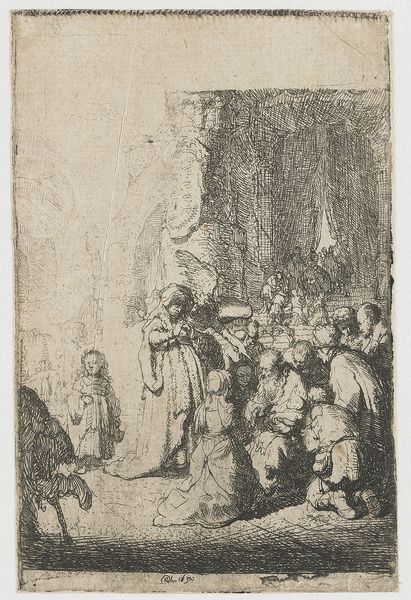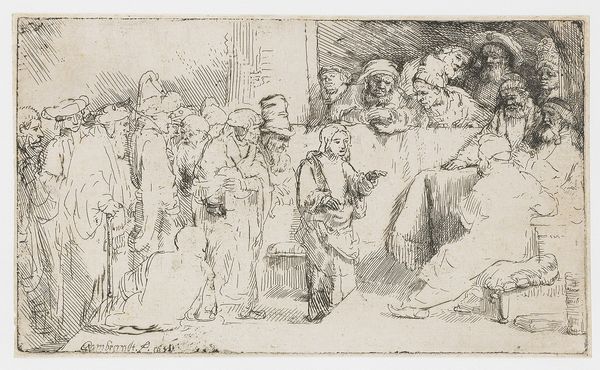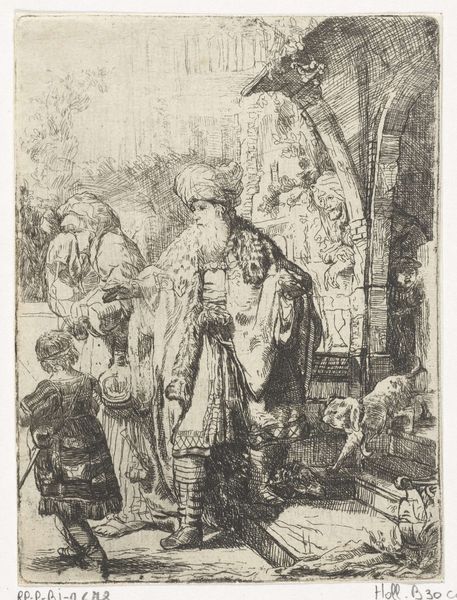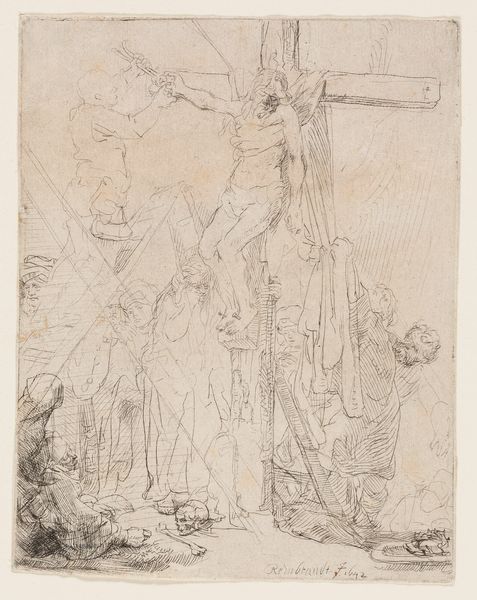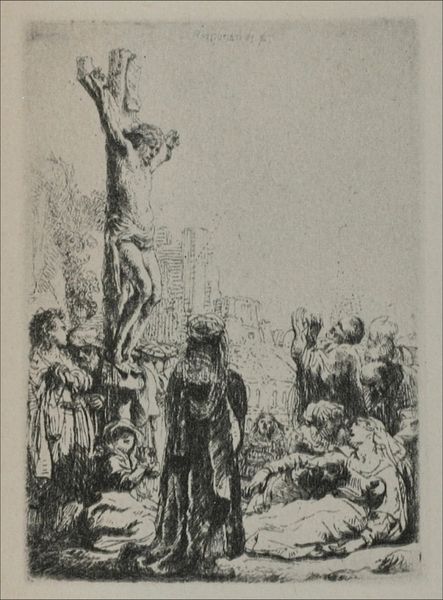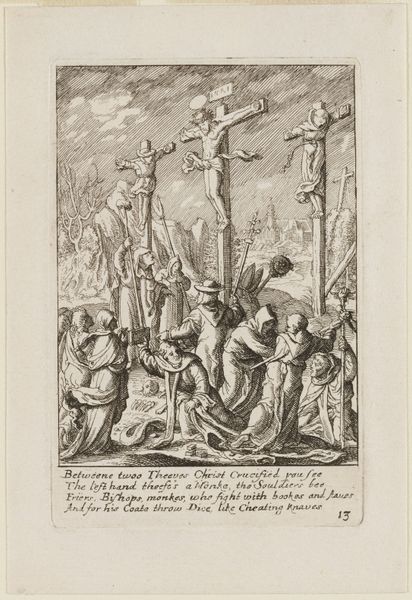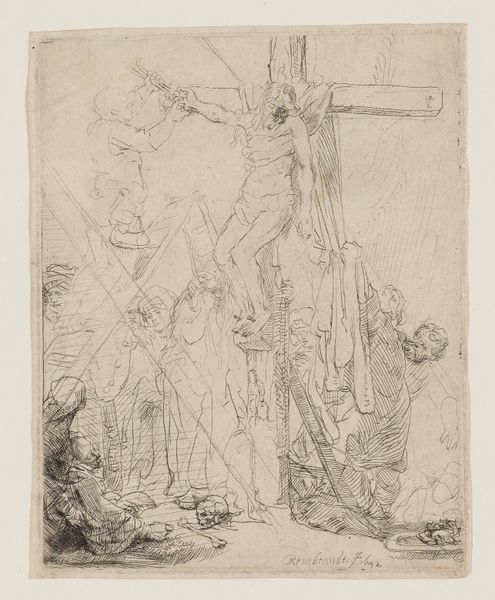
print, etching
#
narrative-art
#
baroque
# print
#
etching
#
figuration
#
history-painting
Dimensions: 3 3/4 x 2 5/8 in. (9.5 x 6.7 cm) (plate)
Copyright: Public Domain
Editor: This is Rembrandt van Rijn's "The Crucifixion- Small Plate," an etching from around 1634. It's a powerful scene, but there's an almost unsettling stillness to it, despite the subject matter. What's your take on this piece? Curator: The "stillness," as you call it, is precisely where the tension lies. Rembrandt isn't just depicting a historical event; he’s inviting us to confront the politics of suffering and representation. Think about who has historically been given a voice, and who has been silenced or othered. The crucifixion becomes a stage for exploring power dynamics and the ways marginalized bodies are displayed. What kind of statement do you think that makes considering it’s an etching, which made the artwork accessible to more people? Editor: That's interesting, I hadn’t thought about it that way. So, by creating an etching instead of a painting, was Rembrandt democratizing the image and the narrative of suffering? Curator: Exactly. He's engaging in a form of visual activism. He’s mass-producing a narrative of profound injustice. Also, consider the diverse emotional reactions of the figures surrounding the cross, etched with such incredible detail. He's humanizing everyone present, not just idealizing the figure of Christ. Where do you think his empathy lies? Editor: It seems like it lies with those who are often overlooked – the grieving, the bystanders, even those complicit in the act. So, the image becomes a challenge to examine our own positions within systems of power and injustice. Curator: Precisely. By emphasizing the humanity in this horrific scene, Rembrandt compels us to reckon with our own roles in perpetuating or challenging oppressive structures, both then and now. Editor: That reframes the whole artwork for me. I see it’s not just about a biblical scene, but about social responsibility. Thanks! Curator: And thank you! Seeing art as a mirror to society helps us all understand its role in advocating for social justice.
Comments
No comments
Be the first to comment and join the conversation on the ultimate creative platform.


